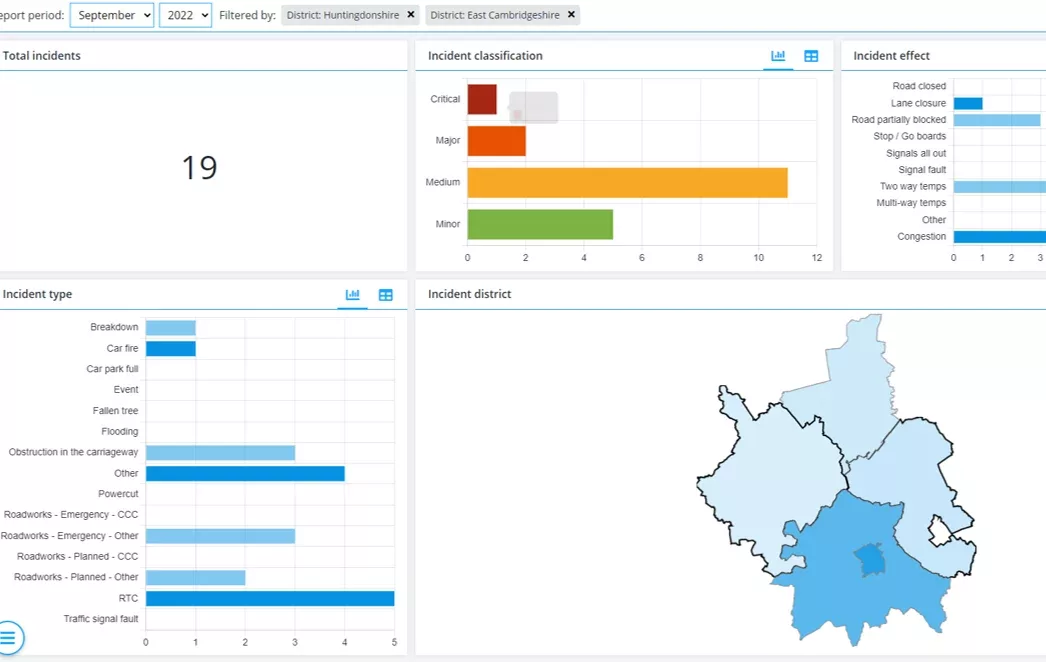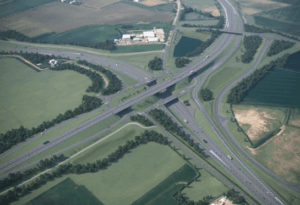Cambridgeshire County Council is using a new high-tech incident management solution called Cadence 247, which is designed to speed up the reporting of road incidents and help reduce delays.
Under a Gov Tech Challenge fund, City Science reviewed the Cambridgeshire County Council Traffic Management Centre team’s end-to-end process for tracking and managing incidents on the county’s road network, which they have to do as part of their duty of care under the Traffic Management Act.
The council had been using a manual, Excel-based system to record and categorise incidents and the actions taken in response. All of this was fed into monthly reports to help identify trends and lessons learned, and attribute delays to incidents. However, it was a high-maintenance system that took time to manage, could result in delays in information dissemination and was not always 100% effective as a communication tool.
So City Science decided to develop what it calls a better, more intuitive cloud-based solution for incident management – Cadence 247.
The software has a real-time dashboard that allows users to record and analyse geospatial data related to road incidents, with the ability to geocode incident data and categorise it by severity and actions. As the information is geocoded, statistics across the county can be quickly reported on. Cadence 247 also gives all users a common operating view of incidents and associated actions taken as they happen.
All of this allows for faster updates, easier reporting, increased accuracy of information for all users, reduced maintenance of the system and fewer delays.
However, Cadence 247 is more than an incident management system. It’s a real-time operational system for other network data that allows visualisation, tracking and reporting of all manner of information.
For example, under the Gov Tech project, bus feeds from the DfT’s BODS protocol were also fed into Cadence 247 via its API, which allows users to see (in real-time) bus locations and performance. Seeing this information in a geographical interface provides clear visualisation of which buses are running ahead, behind or on schedule.
Being able to see the performance of the network and the factors that affect it in real-time – be it an incident or bus delay – is critical to providing public services. In order to reduce traffic congestion, reliable, efficient and effective bus services are vital to the widespread adoption of public transport.
Understanding if and where incidents happen and the effects they have is critical information for mitigating issues. This enhanced level of visualisation and instant access to key information that Cadence 247 provides is an important factor in decarbonising networks.
Richard Burnett, Traffic Management Centre Manager, Cambridgeshire County Council, commented: “We had a gap in our ability to log the incidents that we monitored on the road network, which we had plugged by using an Excel-based spreadsheet that we could pull monthly reports out of – although this understandably took some time for Officers to put together each month.
“The Cadence 247 solution offered us not only a map-based visual aid, but an automatic report generated in real-time, which in just a few months has already become an invaluable tool for us.
“The feedback we have had from our Councillors, Stakeholders and Partners has been very positive, mainly citing the ease of use and understanding of the data”
Gav Jackman, Growth Director, City Science, commented: “We’d like to thank Cambridgeshire County Council for working with us on this exciting Gov Tech Challenge project – it’s been fantastic to see the positive impact Cadence 247 has had on their incident management process. We look forward to introducing more Local Authorities to the software so they can enjoy the same benefits.”
(Picture – City Science)






















